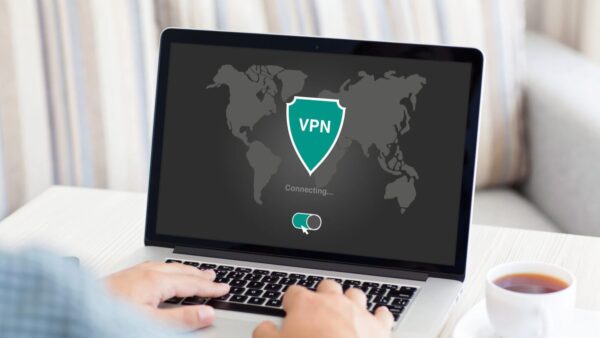Introduction
In today’s digital age, ensuring your online privacy and security has become increasingly important. One effective way to safeguard your data and protect your online activities is by using a Virtual Private Network (VPN) connection. This article will guide you through the process of setting up a VPN connection, providing you with a step-by-step approach to get started.
1. What is a VPN?
A Virtual Private Network (VPN) is a secure tunnel that encrypts your internet connection, ensuring that your data is protected from prying eyes. It creates a private network connection over a public network, allowing you to browse the internet anonymously and securely.
2. Why should you use a VPN?
Using a VPN offers several benefits, including:
- Enhanced security and privacy: VPNs encrypt your data, preventing unauthorized access and protecting your sensitive information.
- Access to restricted content: With a VPN, you can bypass geographical restrictions and access websites or services that may be unavailable in your region.
- Protection on public Wi-Fi networks: VPNs provide an additional layer of security when using public Wi-Fi hotspots, protecting your data from potential hackers.
- Anonymity online: By masking your IP address, a VPN ensures that your online activities remain private and anonymous.
3. Choosing the right VPN service provider
Before setting up a VPN connection, it’s important to choose a reliable VPN service provider. Consider factors such as:
- Security protocols and encryption levels
- Server locations and availability
- Connection speed and bandwidth limitations
- User-friendly interface and compatibility with your devices
- Customer support and reputation
1: Research and select a VPN service provider
Start by researching different VPN service providers and comparing their features and pricing plans. Read reviews and consider recommendations from trusted sources to make an informed decision.
2: Purchase a subscription
Once you have selected a VPN service provider, visit their website and choose a subscription plan that suits your needs. Make the necessary payment arrangements to activate your subscription.
3: Download and install the VPN software
After purchasing a subscription, navigate to the VPN service provider’s website and locate the software download section. Choose the appropriate version for your operating system and follow the on-screen instructions to install the VPN software.
4: Launch the VPN application
Once the installation is complete, launch the VPN application on your device. You will be prompted to log in using your account credentials provided by the VPN service provider.
5: Configure VPN settings
After logging in, you may need to configure some settings based on your preferences. This may include selecting a server location or enabling features such as a kill switch or split tunneling.
6: Connect to a VPN server
Once you have configured the settings, choose a server location from the available options and click the “Connect” button. The VPN software will establish a secure connection with the chosen server.
7: Verify your VPN connection
To ensure that your VPN connection is active and working correctly, verify your IP address and location using online tools or websites. It should reflect the server location you selected.
8: Customize VPN settings (optional)
Explore the VPN software’s settings to customize your experience further. You may have options to enable auto-connect, configure app-specific settings, or select different protocols.
9: Disconnect from the VPN
When you no longer require the VPN connection, simply click the “Disconnect” button or close the VPN application. This will restore your regular internet connection.
10: Troubleshooting common VPN issues
In case you encounter any issues during the VPN setup or usage, refer to the VPN service provider’s support documentation or reach out to their customer support for assistance. They can help troubleshoot common problems like connection drops or compatibility issues.
Conclusion
Setting up a VPN connection is a straightforward process that offers numerous benefits in terms of online privacy, security, and access to restricted content. By following the steps outlined in this guide, you can establish a secure VPN connection and enjoy a safer online experience.
FAQs (Frequently Asked Questions)
1. What is the best VPN service provider?
When it comes to choosing the best VPN service provider, it largely depends on your specific requirements. Some popular options include ExpressVPN, NordVPN, and CyberGhost. Evaluate their features, security protocols, server locations, and user reviews to find the one that suits your needs.
2. Can I use a free VPN?
While free VPN services exist, it’s important to exercise caution as they often come with limitations. Free VPNs may have restricted server options, limited data transfer, or slower connection speeds. Additionally, some free VPNs may compromise your privacy by selling your data. Consider investing in a reputable paid VPN service for a more secure and reliable experience.
3. How does a VPN protect my privacy?
A VPN protects your privacy by encrypting your internet connection and routing it through a secure server. This encryption ensures that your online activities remain private and cannot be easily intercepted or traced back to you. By masking your IP address, a VPN adds an extra layer of anonymity, making it harder for third parties to track your online behavior.
4. Will a VPN slow down my internet connection?
Using a VPN may lead to a slight decrease in internet speed due to the encryption and routing processes involved. However, the impact on your connection speed largely depends on the VPN service provider, the server you choose, and your internet connection’s baseline speed. Premium VPN providers often optimize their networks to minimize speed loss, ensuring a smooth browsing experience.
5. Can I use a VPN on my mobile devices?
Yes, most VPN service providers offer dedicated apps for various mobile platforms, including iOS and Android. These apps allow you to easily set up and connect to a VPN server on your mobile devices, securing your internet connection while browsing on the go. Make sure to choose a VPN provider that supports your mobile operating system and offers a user-friendly mobile app.


